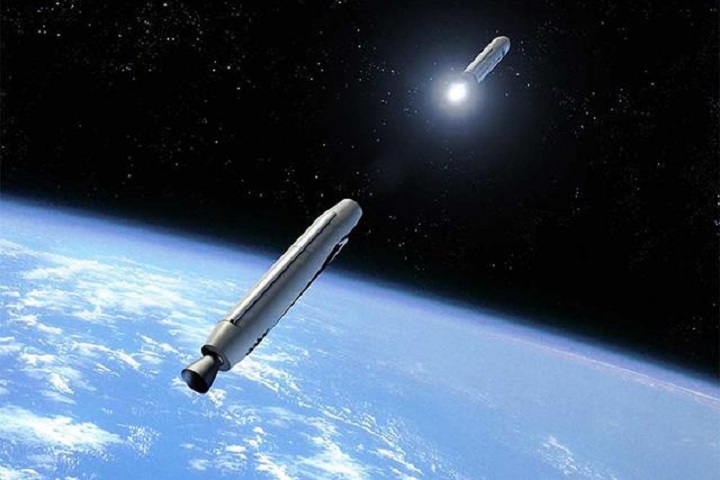
Back in 2012, commercial aerospace firm Virgin Galactic unveiled its latest contribution to private space exploration, known as LauncherOne. Designed to be a smaller, more cost-effective means of deploying small satellites to space, this system consists of an air-launched two-stage rocket that is flown to high altitudes, deployed, and then uses a single rocket engine to reach Low Earth Orbit (LEO).
At the time of its unveiling, Virgin Galactic claimed that the LauncherOne system could deliver payloads ranging from 200 kg (to standard Sun-Synchronous Orbit) or 400 km to LEO for less than $10 million a mission - compared to the $225 million that a conventional rocket launch costs. More recently, however, Virgin Galactic announced that they were in the process of creating their own dedicated carrier aircraft for the system, and would therefore be able to double the payload they could deliver to orbit in the near future.
The deployment of the LauncherOne begins with the carrier aircraft flying the rocket to an altitude of approximately 35,000 feet. Once there, the rocket is released and fires up its single, main stage engine - the "NewtonThree", a liquid oxygen/refined kerosene rocket engine capable of generating 26,308 - 34,020 kg (58,000 - 75,000 pounds) of thrust. After the rocket reaches LEO, the second state rocket is detached, and delivers the payload - most likely a microsatellite - to its intended orbit.

LauncherOne consists of a two-stage launch system that is deployed from high altitudes by a carrier aircraft. Credit: virgingalactic.com
The entire process is reminiscent to how SpaceShipTwo, Virgin Galactic's commercial aerospace carrier, works. In the first stage of deployment, this rocket-propelled spacecraft is carried to a deployment altitude of 15,000 meters (50,000 ft) by its carrier, the WhiteKnightTwo. After being released, the craft engages its rocket engine, achieves supersonic speed, and reaches LEO a few minutes later.
This process, which is known as air-launching, eliminates the most costly aspect of ground-launches. This is the initial phase of a launch, where rockets spend 80% of their thrust to counteract the effects of gravity and get through the densest part of the atmosphere. By launching rockets from a high-altitude position, where encounter far air resistance, and are therefore able to dedicate most of their propellant towards achieving the speeds they need to get into space.
But aside from the cost-saving benefits of air-launching, there's the added benefit of flexibility. Whereas rockets can only be deployed from launch pads located near the Earth's equator, an air-launched rocket can be deployed from any airfield anywhere in the world. They can also operate under conditions that would normally stall a launch, such as storms and other low-altitude weather systems.
And with the creation of their own dedicated carrier aircraft, Virgin believes they will be able to achieve both an increased payload capacity and significantly higher rate of flight. As Virgin Galactic CEO, George T. Whitesides, said recently at the World Business Satellite Week in Paris:
“The market has spoken, and we have listened: we have roughly doubled the payload for our customers without increasing the price. LauncherOne will be ready to meet the rapidly expanding needs of satellite startups, space agencies, and research institutions thanks to the investments we’ve already made in our engines, tanks, avionics, and our production infrastructure.”
Virgin Galactic also added that it is in the final stages of acquiring a commercial aircraft to add to its air-launch fleet, and expects to finalize the acquisition in the coming months. They are also currently developing the LauncherOne system - with full, private funding - using their team of 150 experienced aerospace professionals at their state-of-the-art 14,000 square meter (150,000 square foot) manufacturing and design facility in Long Beach, California.
Want to get involved in space exploration, or have ideas on how to make space exploration cheaper and more efficient? Then head on over to The Lunar Initiatives Flash Art Competition and the Sky For All: Air Mobility for 2035 and Beyond challenges. Or go to the Launch a Challenge page and be prepared to see your idea become a reality!








